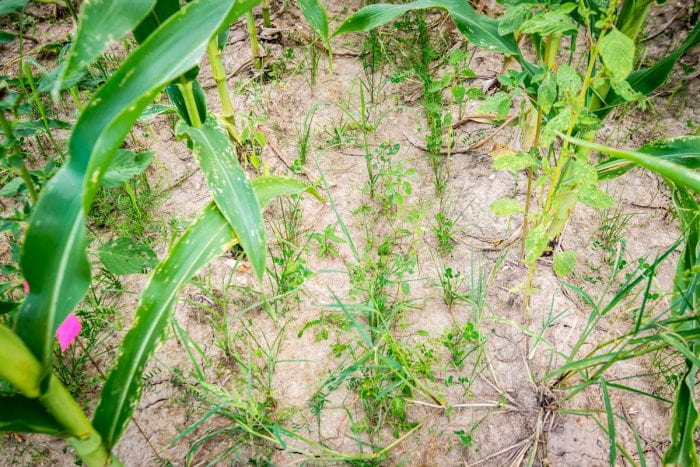
Cover crops interseeded between corn rows. Photo: Edwin Remsberg and USDA-SARE
Interested in meeting w/ Scotty? He has time to meet with people before or after the seminar. Email Catalina Enright.
Join us on the Cornell campus in 135 Emerson, or online, for a talk by:
Scott Wells
University of Minnesota
While corn and soybean dominate agriculture on the upper Midwestern landscape, their temporal footprints are typically limited to five months of the growing season. The absence of growing plants and lack of diversity associated with these summer annual production systems during the rest of the year directly impacts and impairs Minnesota surface and ground waters. Recently the Minnesota Pollution Control Agency (MPCA) reported that more than 75% of the nitrate-nitrogen entering Minnesota surface waters originated from agricultural sources through tile drainage and surface run-off.
In the report, the MPCA stated that a broad array of technologies are needed to achieve the statewide goal of a 40% nitrogen reduction and that widespread adoption of living plants on the landscape (i.e., cover crops and perennials) will be critical to achieving these critical nitrogen reductions. Cereal cover crops, when successfully established, reduce off-site movement of nitrogen. However, establishment and subsequent cover crop performance varies widely from year to year.
The primary challenges limiting cover crop adoption are twofold:
- First, full-season corn hybrids and full-season maturity soybeans compete with early autumn cover crop planting opportunities.
- Second, wet and cool autumns further constrain cover crop planting due to the lack of field workability days.
Cover crop interseeding offers an opportunity for improved cover crop performance. Interseeding cover crops at V5 – V7 in corn and R7 in soybean is a promising strategy. However, the adoption of cover crops in Minnesota is limited; when asked, growers’ willingness to adopt cover crop is constrained by economic viability. New crops and cropping systems developed at the University of Minnesota promise both ecosystem services and, unlike traditional cover crops (with excepting of forage-based cropping systems), these new crops offer economic benefits to promote adoption.
This is seminar is hosted by the section of Soil and Crop Sciences in the School of Integrative Plant Sciences at Cornell University. Seminars are recorded and viewable at a later date on YouTube.